Focus on Fifties
Published: Monday, 12th October 2020 08:00 AM
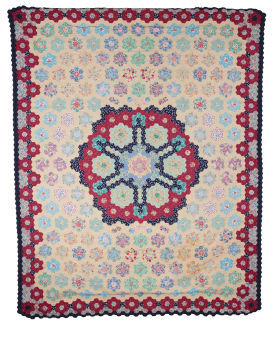
The mid-20th century was a difficult time for the crafts of patchwork and quilting. Post-war shortages, changes in fashionable styles and the role of women and competition from commercially manufactured alternatives meant that traditional patchwork and quilts were in decline. Surviving pieces from the middle of the century, before the wider revival in the late sixties and seventies are therefore less common, and where they do exist, they tend to follow a very similar style. However, they are still a fabulous snap shot of a period, and contain some interesting mid-century fabrics showcasing the different prints and artificial fabric types that typified the era.
The Snape Coverlet is a hexagon mosaic coverlet made from plain and printed cotton dress fabrics and woven cord fabrics, possibly including 'Sparva'. The design forms a central hexagon star shape surrounded by rosettes separated by a yellow path. Red hexagon rosettes form a border edge to the coverlet. It was made by Miss Nellie Snape, Mottram St. Andrews, Cheshire and dates from the 1950s-60s.
This ‘Quill Cushion’ is made from an unusual three dimensional patchwork technique known as quill patchwork, which has a similar finished look to rag rugs. It is made from pink, gold and blue rayon fabric, and each piece is made from a rectangle of fabric, whose top corners are folded down to the centre bottom edge to form a triangle. The sides are then folded in to create an elongated pentagon shape. It was a technique used in the late Victorian period, and instructions for ‘Quill Patchwork’ can be found in magazines such as Weldon’s Practical Patchwork’.
This multi-coloured cotton and rayon top is made up of hexagons in 1950s and some 1960s fabrics. Hexagons mosaic patchwork dominated in this period, which was heavily influenced by the work of the W.I. and Averil Colby, who primarily taught and practised this style of patchwork.
This mid-20th century squares patchwork coverlet is made from large squares of dress and furnishing fabrics with a border of salmon pink artificial or man-made fabric. The large squares are a slightly different style to the usual hexagons we see from this period, and also give us a better glimpse at those fabulous fifties prints.
This hexagon mosaic patchwork coverlet uses a random arrangement of printed fabrics. The initials and date ‘K.M. 1958’ are embroidered in pale blue thread on a pale green hexagon on one edge. It was made by Katherine MacDonald of Edinburgh, possibly whilst living in Callendar or the South East of England. It contains some interesting prints, including some children’s nursery character designs.
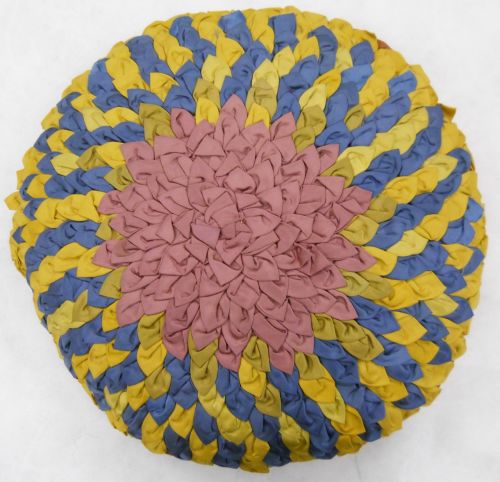 Quill Cushion
Quill Cushion
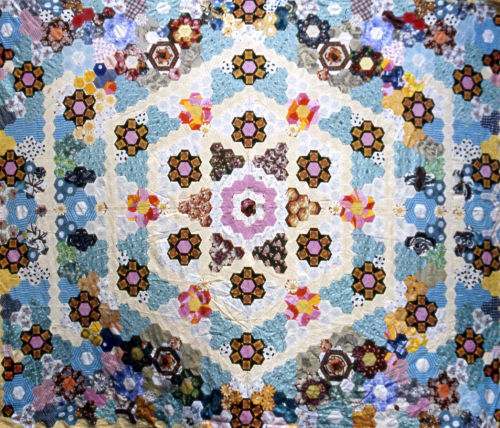 Cotton and Rayon Hexagon Top
Cotton and Rayon Hexagon Top
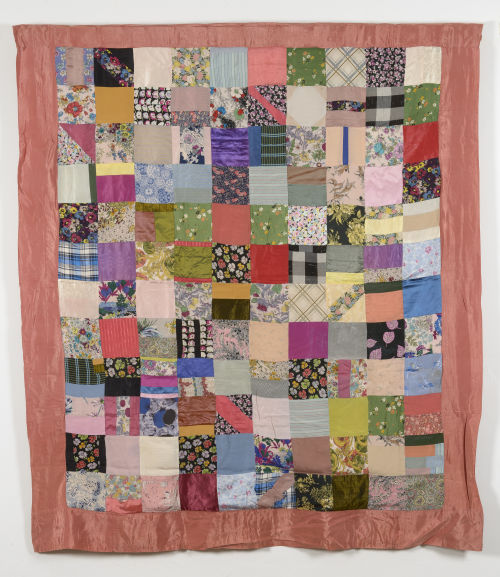 Mid-20th Century Squares Coverlet
Mid-20th Century Squares Coverlet
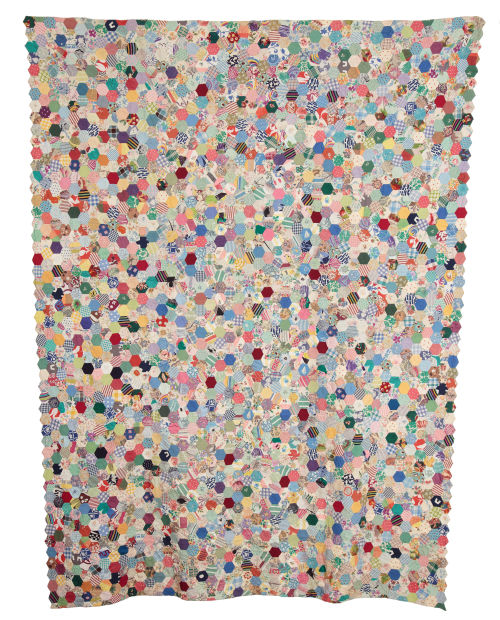 Fifties Random Hexagon Coverlet
Fifties Random Hexagon Coverlet